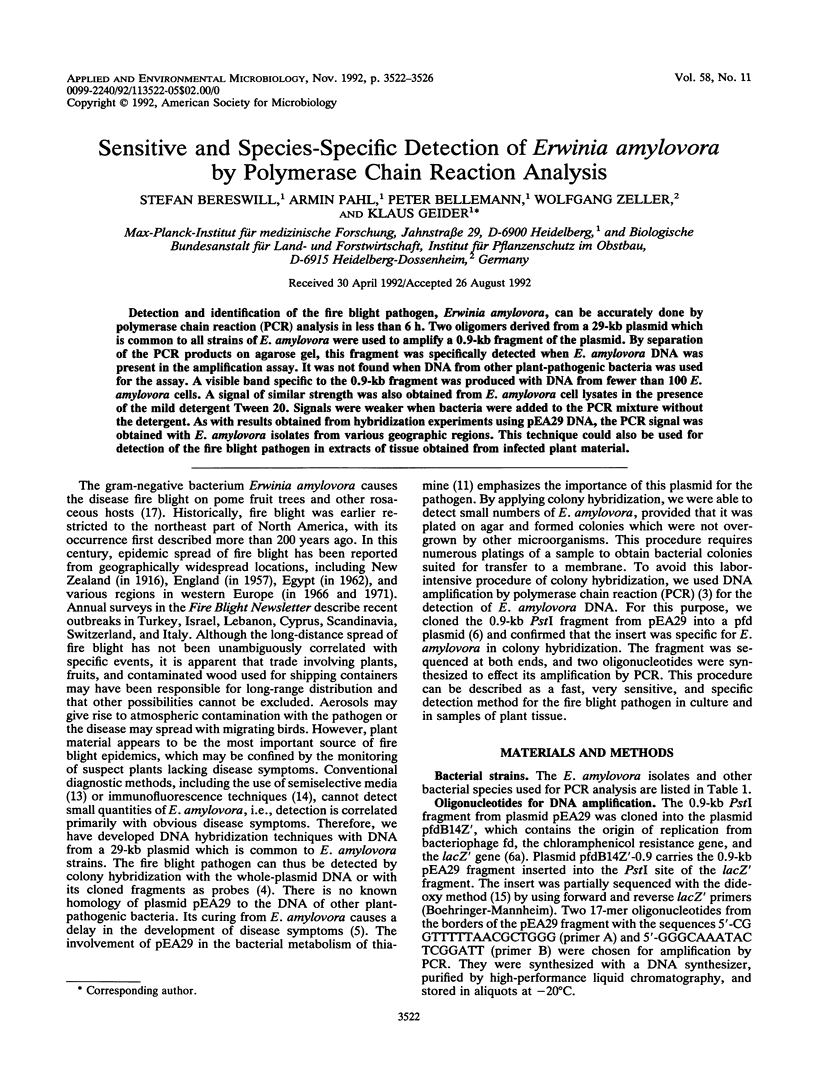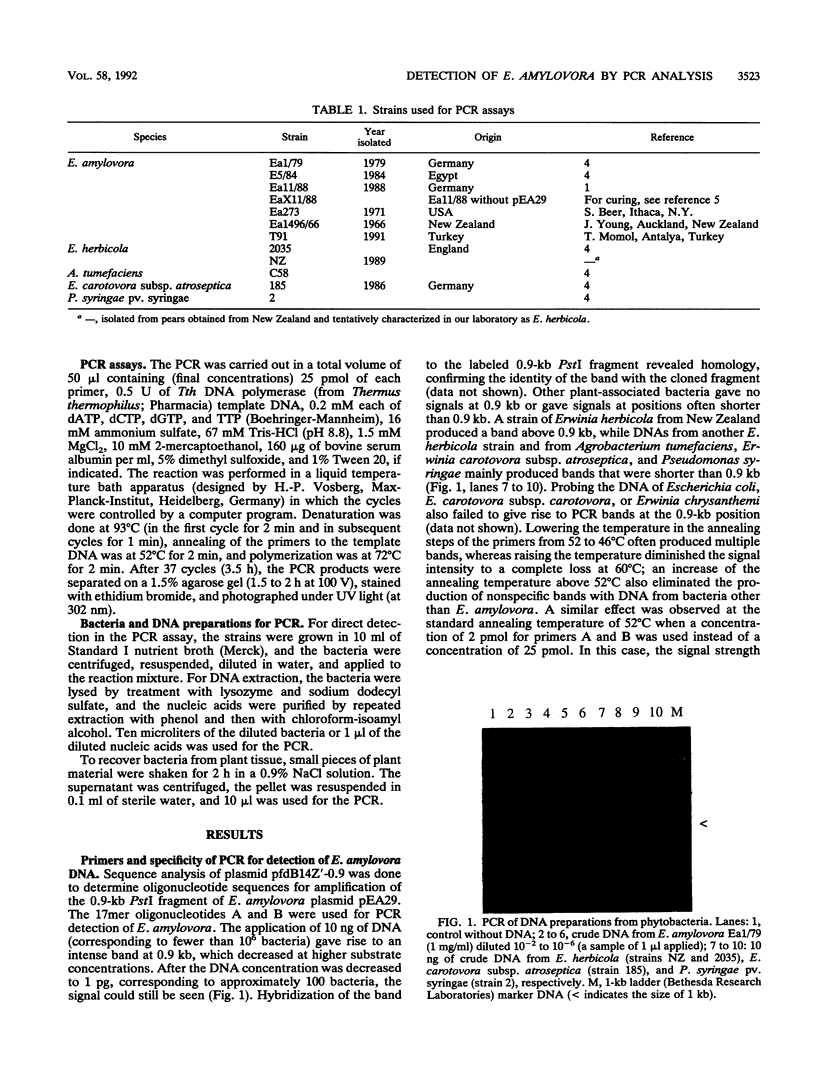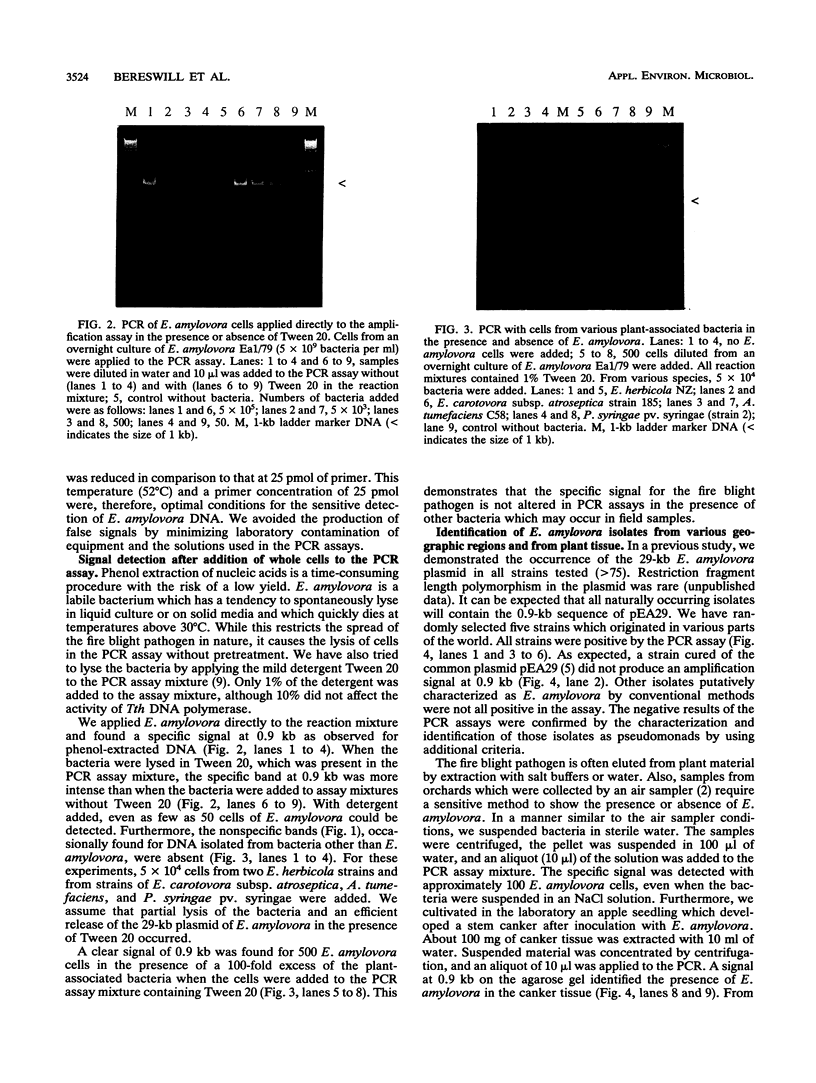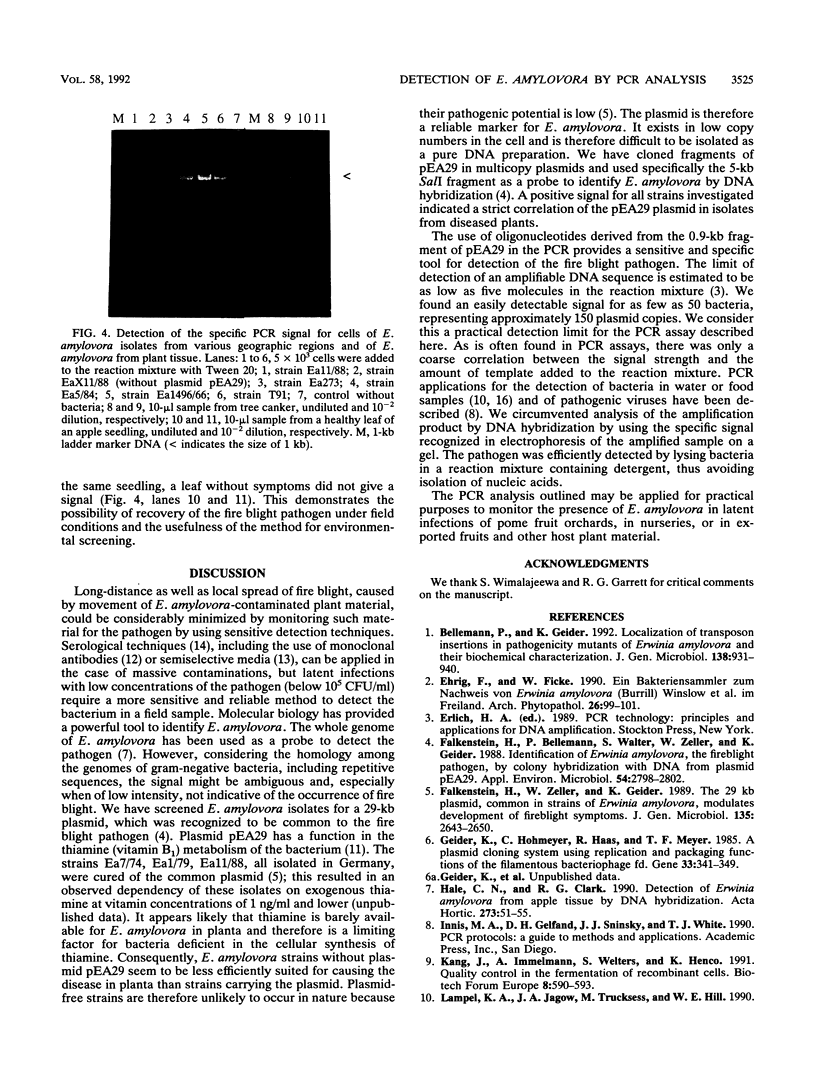Abstract
Detection and identification of the fire blight pathogen, Erwinia amylovora, can be accurately done by polymerase chain reaction (PCR) analysis in less than 6 h. Two oligomers derived from a 29-kb plasmid which is common to all strains of E. amylovora were used to amplify a 0.9-kb fragment of the plasmid. By separation of the PCR products on agarose gel, this fragment wa specifically detected when E. amylovora DNA was present in the amplification assay. It was not found when DNA from other plant-pathogenic bacteria was used for the assay. A visible band specific to the 0.9-kb fragment was produced with DNA from fewer than 100 E. amylovora cells. A signal of similar strength was also obtained from E. amylovora cell lysates in the presence of the mild detergent Tween 20. Signals were weaker when bacteria were added to the PCR mixture without the detergent. As with results obtained from hybridization experiments using pEA29 DNA< the PCR signal was obtained with E. amylovora isolates from various geographic regions. This technique could also be used for detection of the fire blight pathogen in extracts of tissue obtained from infected plant material.
Full text
PDF




Images in this article
Selected References
These references are in PubMed. This may not be the complete list of references from this article.
- Bellemann P., Geider K. Localization of transposon insertions in pathogenicity mutants of Erwinia amylovora and their biochemical characterization. J Gen Microbiol. 1992 May;138(5):931–940. doi: 10.1099/00221287-138-5-931. [DOI] [PubMed] [Google Scholar]
- Falkenstein H., Bellemann P., Walter S., Zeller W., Geider K. Identification of Erwinia amylovora, the Fireblight Pathogen, by Colony Hybridization with DNA from Plasmid pEA29. Appl Environ Microbiol. 1988 Nov;54(11):2798–2802. doi: 10.1128/aem.54.11.2798-2802.1988. [DOI] [PMC free article] [PubMed] [Google Scholar]
- Geider K., Hohmeyer C., Haas R., Meyer T. F. A plasmid cloning system utilizing replication and packaging functions of the filamentous bacteriophage fd. Gene. 1985;33(3):341–349. doi: 10.1016/0378-1119(85)90242-2. [DOI] [PubMed] [Google Scholar]
- Steffan R. J., Atlas R. M. Polymerase chain reaction: applications in environmental microbiology. Annu Rev Microbiol. 1991;45:137–161. doi: 10.1146/annurev.mi.45.100191.001033. [DOI] [PubMed] [Google Scholar]






